Calycanthus floridus has garnered many common names derived from its unique scent, which is like cloves mashed with pineapple and bananas. The elongated, thin petals of its flowers vary from a deep maroon to a rust-red. This southeastern U.S. native plant is a great addition to the garden as a naturalized shrub that’s allowed to spread or as a specimen plant near the patio. Fall is the best time to plant.
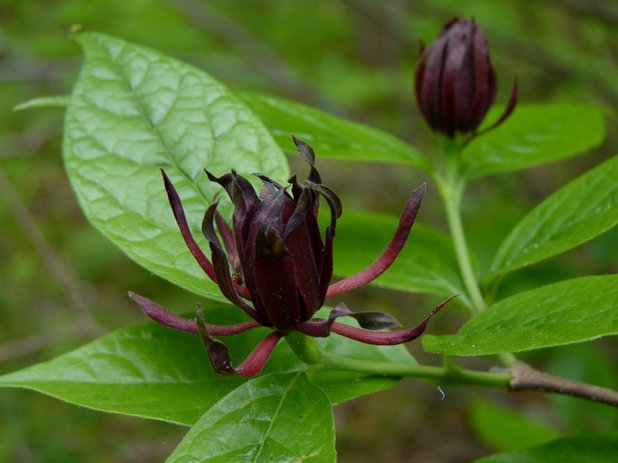 Photo by Flickr user Dendroica cerulea
Photo by Flickr user Dendroica cerulea
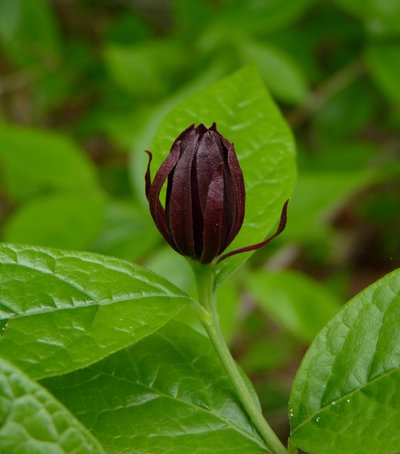 Botanical name: Calycanthus floridusCommon names:
Botanical name: Calycanthus floridusCommon names: Eastern sweetshrub, Carolina allspice, strawberry shrub
Origin: Native from southern New York state to northern Florida and west to Arkansas and Illinois
Where it will grow: Hardy to -30 degrees Fahrenheit (USDA zones 4 to 9; find your zone)
Water requirement: Medium
Light requirement: Partial shade to mostly sunny; prefers afternoon shade
Soil requirement: Prefers a nutrient-rich, moist loam but tolerates many soil conditions
Mature size: 6 to 10 feet tall and wide
Benefits and tolerances: Tolerates clay soils; deer resistant
Seasonal interest: Bold, fragrant flowers in late spring
When to plant: Fall
Photo by Flickr user Dendroica cerulea
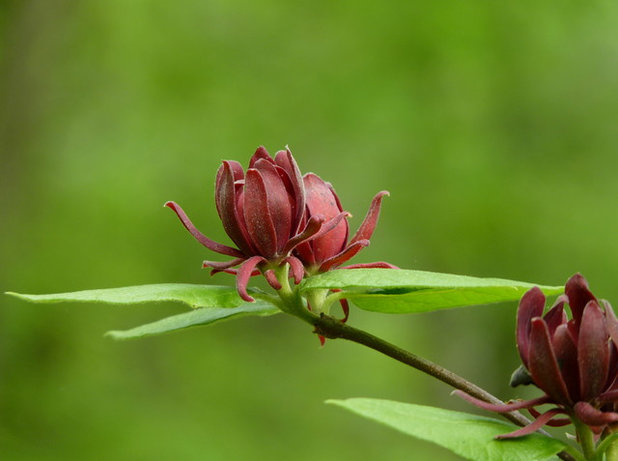 Distinguishing traits: Calycanthus floridus
Distinguishing traits: Calycanthus floridus is a
rounded suckering shrub with elliptical leaves and unique rust-red to deep maroon flowers with long, strappy petals. All parts of the plant — including the leaves and twigs — are aromatic when crushed and make a great potpourri. But don’t be fooled by its delicious fragrance, because this plant is not edible.
Photo by Flickr user Dendroica cerulea
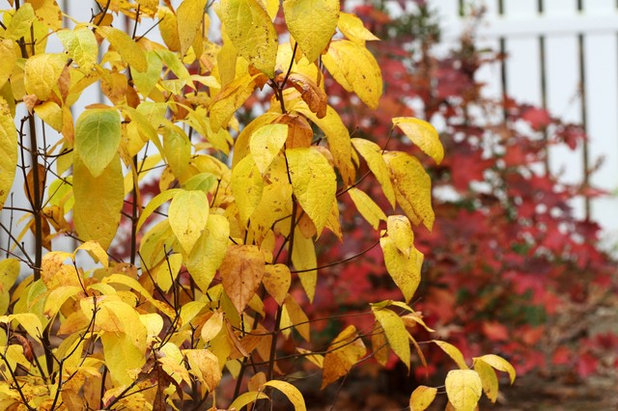
Sylvia Armstrong
In fall Eastern sweetshrub’s leaves turn a bright yellow before dropping to the ground. Teardrop-shaped fruits are deep maroon to dark brown and remain through winter.
Shown: Calycanthus floridus’ fall color, with oakleaf hydrangea (
Hydrangea quercifolia) in the background
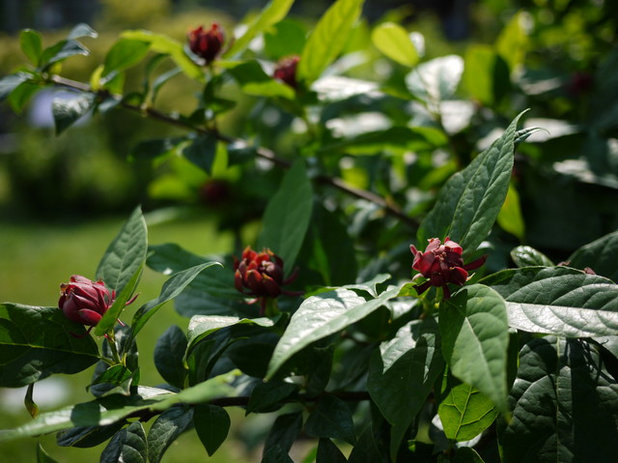 How to use it.
How to use it. Eastern sweetshrub makes a great aromatic specimen plant near a patio or entryway, where the sweet-spicy smell can be experienced. It will develop a more compact form and look less wild if it’s pruned regularly after it flowers.
This is one of a limited number of plants that deer do not like to consume, which makes it useful as a naturalized deer-resistant hedge or screen. As a native to the bottomlands of woodlands, it will excel in a partially shaded spot with moist soil. Do not let this plant dry out or languish in intense afternoon sun.
Plant Eastern sweetshrub among other Southeast U.S. natives that thrive in moist, rich soil, like bald cypress (
Taxodium distichum), native witch hazel (
Hamamelis virginiana) and Piedmont azalea (
Rhododendron canescens).
Photo by Madeleine Ball
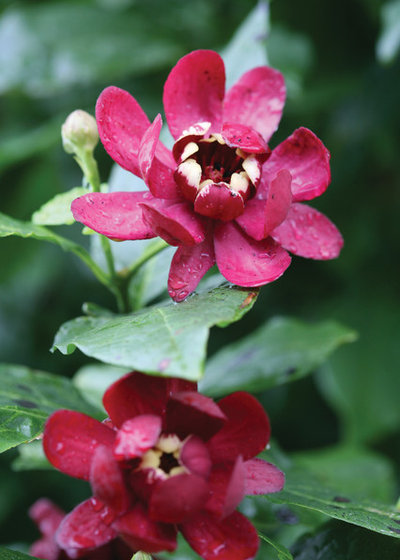
Proven Winners
Planting notes. Like many other woodland shrubs, Calycanthus is easily propagated by layering, because it produces suckers that readily colonize. To encourage yours to spread, simply bend a low branch down to the ground and make contact with the soil at one of the nodes where leaves grow from the branch. Cover this entire spot with soil and water regularly. Through soil contact and with regular moisture, the buried growth cells at the node will produce roots and eventually send up new growth.
Autumn is the perfect time to encourage your Calycanthus
to layer itself, because it will establish roots now and be ready for a spring growth spurt. Conversely, plant spread can be kept in check by removing any suckers that emerge from the base of the plant and pruning low twigs and branches so that they don’t touch the ground.
Nursery-grown Calycanthus
can be difficult to transplant. Ensure success by keeping the roots well watered and removing any weeds after transplanting to help it establish. Once established in the right location,
Calycanthus is a trouble-free plant requiring little maintenance.
For the most success with this plant, establish a colony in an area with moist soil that receives some afternoon protection from the sun. Plants will dry out and not bloom as prolifically if their roots become too dry.
Shown: ‘Aphrodite’ cultivar with attractive white center petal tips, hardy to zone 5, with an extended bloom time up to two months. Another cultivar recently introduced is
‘Venus’, which has dainty all-white flower petals with a maroon dash accent in the center.
More: 8 Plants for a Deliciously Fragrant Fall Garden
Browse plants native to more regions of the U.S.





